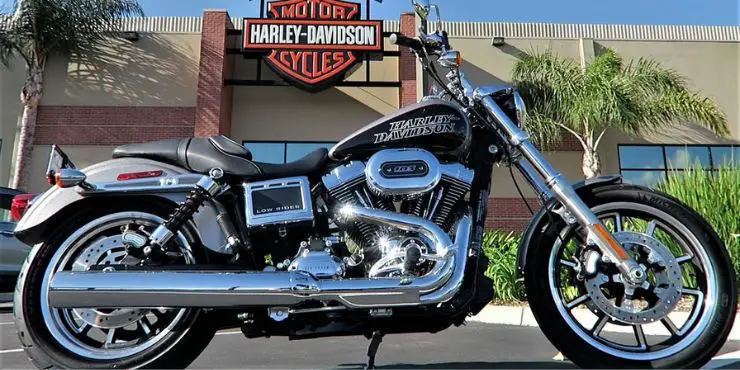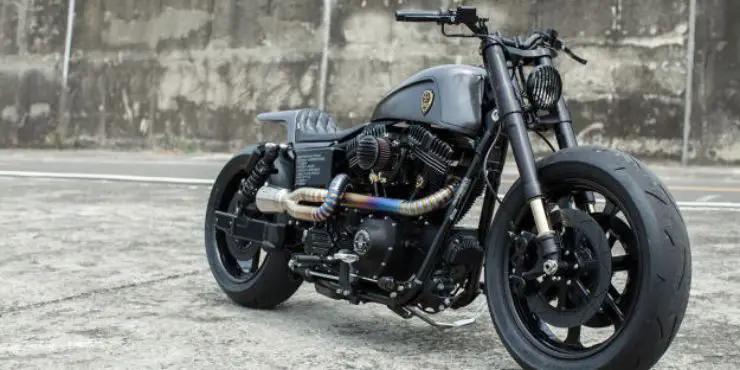Are you in the market for a new Harley-Davidson Dyna, but weren’t aware that Harley discontinued the Dyna? If so, then you’re definitely in the right place, as you’ll get to know the reason here.
Harley-Davidson discontinued the Dyna line in 2018, merging it with the Softail lineup to create a single platform that improved handling, performance, and frame rigidity while maintaining Dyna-inspired styling.
In this article, you’ll get to know all about the Harley-Davidson Dyna, why did Harley discontinue the Dyna, which bike replaced the Harley-Davidson Dyna, the marketing strategy behind discontinuing the Harley-Davidson Dyna, and more. Continue reading to get all the answers that you’re looking for.
Why did Harley discontinue the Dyna?
Harley-Davidson often shakes its lineup to keep up with the latest trends and the big-bike market. A few years back, Harley-Davidson decided to discontinue the Dyna model. The change in demographics of bikers is causing Harley-Davidson to rethink its bikes. Harley-Davidson has launched 13 new models as a part of an ambitious product-development program that promises to bring almost 100 models to the market in 10 years. Unsurprisingly, the brand has decided to discontinue a couple of models to make way for the new ones.
It may not be quite as dramatic as Polaris Industries ending the production of its Victory bikes to concentrate solely on the Indian Motorcycle nameplate. However, Harley-Davidsons’s decision to discontinue the Dyna lineup and merge it into the Softail line is almost as significant.
Harley-Davidson looking to gain traction with the new strategy
Harley-Davidson’s bike sales hit a 5-year record low in 2017. When the company reported the Q2 earnings results in July, U.S. sales fell 9% for the period. Moreover, they were down 8% over the first 6 months. The report left the motorcycle manufacturer with little to no choice, but to revise its full-year shipment forecast lower while cutting production and firing workers.
It has been clear for a while that Harley-Davidson was experiencing disappointing sales. In 2017, Harley suggested that the company can ship in as many as 49,000 in the historically weak fourth quarter, a feat that the company hadn’t experienced since 2011 when it was still rebounding out of the recession.
However, it was equally obvious that the company needed a change. With middle-aged bikers not purchasing bikes in the numbers that they used to, focusing on the younger and more urban demographic needed to take precedence. Harley-Davidson introducing 13 new models with the lightweight Milwaukee-Eight engine and better handling is a direct attempt to appeal to this market.
Harley-Davidson discontinues the bad-boy image for a youthful, vibrant look
To that end, Harley-Davidson eliminated the Dyna lineup, which has long been a step up from the Sportster lineup. Debuted in 1991, the Harley-Davidson Dyna can be best expressed as the raw experience of riding a Harley-Davison bike. Moreover, it has an exposed rear suspension connecting the swingarm to the frame and motor mounts, which transfer the engine vibration to the rider.
With the debut of the Milwaukee-Eight engine, the writing was on the wall for the Dyna bike. Its chassis wasn’t able to accommodate the new Big Twin. Harley-Davidson then decided to fold the Dyna into the Softail lineup. It includes bikes like the Fat Boy, Low Rider, Heritage Classic, Deluxe, Softail Slim, Street Bob, and Fat Bob.
Softail bikes have always been built to offer comfortable long-distance rides. Its engine mounts mute the vibration, while its rear suspension remains hidden. However, Harley-Davidson has revamped that as well, unveiling a new and exciting monoshock frame that eliminates the bike’s dual-shock suspension. It may not erase the company’s outlaw image, but it’ll certainly smoothen it over and tone it down. Something like this will definitely appeal to the new demographic.
Equally, significant was the end of the V-Rod. It was a racing-style, liquid-cooled sports bike that debuted in 2001. However, it never actually fit in with the cruisers, touring bikes, and even the Sportsters or Dynas.
Yes, the Harley-Davidson Dyna and the Harley-Davidson Softail bikes are discontinued and gone. The new 2018 Cruiser lineup from Harley-Davidson has bikes that carry Dyna-like names. However, the new design, internally referred to as Serengeti, is largely inspired by and known as “Softail”.
Harley folded the Dyna model in the Softail lineup
The deviation from the older generation Softails is huge. However, the “design language” is clearly liked to the 1936 EL Knucklehead and the 1949 Panhead. The continuous line from the steering head to the rear axle is at the heart of the Harley design ever since.
Harley-Davidson has continued to bet on that image while coming up with an entirely new design for carrying the cruiser line forward. The Milwaukee-Eight engines are mounted solidly and twin counterbalanced. The “rubber soul” of the Dyna will need to be channeled through the FL touring lineup and Sportsters. Both of these come with similar elastomer engine mounts, giving you the happiest parts of engine vibration and character at idle and certain RPMs.
Moreover, they also flip to a glass-smooth sweet spot tuned to get a nice wide swath of “normal RPM” running.
Harley-Davidson Super Glide II
Harley-Davidson Dyna has been the performance Big Twin ever since the FXDB Sturgis came out in 1991. However, before there was the FXD, there was FXR. The Harley-Davidson FXR Super Glide II came out in 1982, and it combined the elastomer mounts and powertrain of a touring bike in a lean, light hand-welded steel-tube frame. The Dyna lowered the cost by utilizing an easier-to-build frame while giving it a slightly longer and lower but sporty look.
The cult of FXR still remains strong as ever, and it has started to bloom lately. The rubber-mount performance thing is pretty strong in California, but it has made its way to the east in a big way. The cult of FXR is full of passionate, creative people. The spirit of FXR has also been expressed in numerous high-performance Dyna models in the market.
Harley-Davidson Low Rider S
Harley-Davidson bikes have always been about the look, feel, and sound. This is something that the company can attest to. The new Harley-Davidson Softails don’t really look or feel a lot like Dynas, although the sound still remains the same.
The greatest expression of the Harley-Davidson Dyna lineup was the 2017 Harley-Davidson Low Rider S. The bike was Cycle World’s Best Cruiser bike of 2017. Moreover, it was the first model that was crafted and manufactured under the direction of Brad Richards. Brad Richards took over from Willie G. Davidson as the new head of design and styling.
But what if the love for rubber soul turns out to be too strong? You can probably take care of at least one small aspect of the rubber-mount performance crowd. You can build a radically stripped-down FL tourer, which is similar to an FXR in spirit but without having a lighter frame.
The 2018 Softail move could even open the door to actually bringing back the FXR in some form. It’s great to fantasize about scenarios like a rubber-mount Milwaukee-Eight inside an FXR-inspired welded-steel frame, which incorporates design and styling elements seen in the rich customs on the road and at shows.

As it is, the seasoned Harley-Davidson enthusiasts have lost the current tradition holy trinity of Big Twin – Touring, Softail, and Dyna. However, remember that there was a time when there were no rubber-mount Harley-Davidson bikes at all. There was no final belt drive or any Softails. As much as Harley-Davidson bikes and the traditions of the brand are perceived to remain the same, the brand has always had a history of changes. There was a time in 1969 when people thought it was the end of the Harley-Davidson brand.
AMF ended up buying The Motor Company in 1969 and the rest is history. Recent years have proven that Harley-Davidson will not be resting. The brand is always looking to find new customers and attract a younger demographic with its new bikes.
Conclusion
Thank you for reading. Hopefully, now you know a lot more about the Harley-Davidson Dyna, why did Harley discontinue the Dyna, which bike replaced the Harley-Davidson Dyna, the marketing strategy behind discontinuing the Harley-Davidson Dyna, and more. Harley-Davidson discontinued the Dyna in 2018, and it got replaced by the Harley-Davidson Softail. The 2018 cruiser lineup from Harley-Davidson featured bikes that carry Dyna-like names but the design, known internally as Serengeti, has been inspired by and referred to as Softail. Moreover, the “rubber soul” of the Harley-Davidson Dyna will need to be channeled through the FL touring line and Sportsters.

